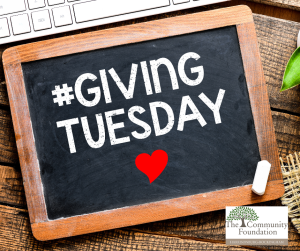Valuable conversations: Why it’s smart to talk with your clients about charitable giving
Valuable conversations: Why it’s smart to talk with your clients about charitable giving
January is a good time to start helping your clients plan for their annual giving. With the year-end flurry of donations still fresh in many clients’ minds, you may discover that clients will welcome your suggestion to make 2023 the year to get organized early, particularly as economic headwinds make planning especially important.
A conversation that benefits everyone
Among the many benefits of discussing charitable giving with your clients is that your clients will see you as an expert about local community needs and nonprofits, especially when you have a close working relationship with TCFHR team. Your philanthropic clients want to learn how they can make a difference through their charitable activities, and they are expecting their advisors to be ready to help them structure and plan their giving. Indeed, for years, research has shown that a proactive advisor who offers options for incorporating philanthropy into financial and estate plans inspires client loyalty, even across client generations.
The Community Foundation advantage
Advisors frequently comment that they’re surprised to discover the many ways The Community Foundation can help their clients, especially compared with national donor-advised fund programs affiliated with brokerage houses or financial services firms.
Sometimes the greatest needs really are right here at home, and working with TCFHR is often the very best option for ensuring that your clients are informed and impactful philanthropists. The team at TCFHR works with local nonprofits every single day and thoroughly understands how organizations are meeting community needs.
In addition, TCFHR is unparalleled in its ability to be flexible and responsive, providing outstanding, personal service designed around your clients’ needs while always respecting your role as your client’s primary advisor.
Options for every client’s unique situation
Our team welcomes the opportunity to work with you and your clients to implement their charitable giving goals. Here are just a few of the ways we can work with you as you plan for 2023:
Wills and trusts
A client can establish a bequest to a fund at TCFHR through a will or trust or through a beneficiary designation on a qualified retirement plan or life insurance policy. TCFHR will provide proper bequest language.
Retirement plan beneficiary designations
Bequests of qualified retirement plans can be extremely tax efficient. Funds flowing directly to a client’s fund at TCFHR from a retirement plan after the client’s death will not be subject to income tax or estate tax.
Family philanthropy
Consider encouraging clients to involve their children and grandchildren in philanthropy, especially when the clients are working with TCFHR through a family donor-advised fund or other collaborative vehicle.
Income tax planning
Remind clients that they are eligible for an income tax deduction for lifetime charitable gifts, and the gifted assets are no longer subject to future estate taxes.
Complex giving
Consider more complex giving vehicles, including charitable remainder trusts, charitable gift annuities, and gifts of closely-held stock. TCFHR can work with you to establish these structures to help facilitate your clients’ charitable giving goals and meet the clients’ financial and tax goals at the same time.
We look forward to working with you in 2023! 540-432-3863
The team at TCFHR is a resource and sounding board as you serve your philanthropic clients. We understand the charitable side of the equation and are happy to serve as a secondary source as you manage the primary relationship with your clients. This article is provided for informational purposes only. It is not intended as legal, accounting, or financial planning advice.





















